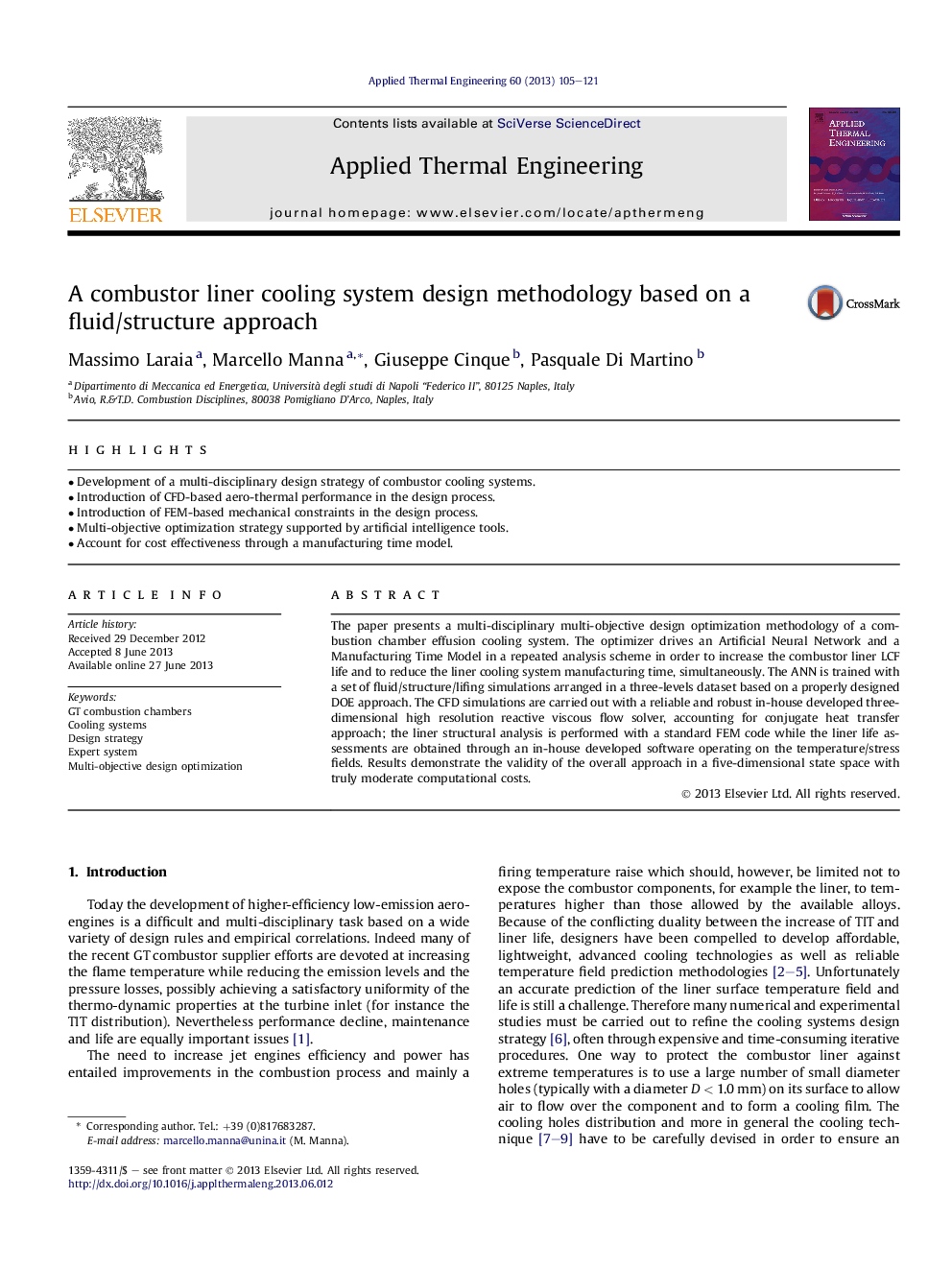| Article ID | Journal | Published Year | Pages | File Type |
|---|---|---|---|---|
| 7049661 | Applied Thermal Engineering | 2013 | 17 Pages |
Abstract
The paper presents a multi-disciplinary multi-objective design optimization methodology of a combustion chamber effusion cooling system. The optimizer drives an Artificial Neural Network and a Manufacturing Time Model in a repeated analysis scheme in order to increase the combustor liner LCF life and to reduce the liner cooling system manufacturing time, simultaneously. The ANN is trained with a set of fluid/structure/lifing simulations arranged in a three-levels dataset based on a properly designed DOE approach. The CFD simulations are carried out with a reliable and robust in-house developed three-dimensional high resolution reactive viscous flow solver, accounting for conjugate heat transfer approach; the liner structural analysis is performed with a standard FEM code while the liner life assessments are obtained through an in-house developed software operating on the temperature/stress fields. Results demonstrate the validity of the overall approach in a five-dimensional state space with truly moderate computational costs.
Related Topics
Physical Sciences and Engineering
Chemical Engineering
Fluid Flow and Transfer Processes
Authors
Massimo Laraia, Marcello Manna, Giuseppe Cinque, Pasquale Di Martino,
